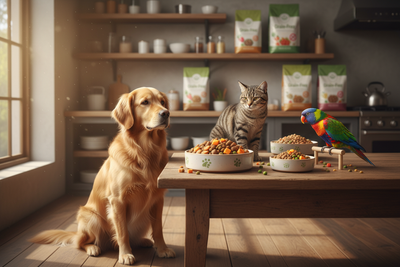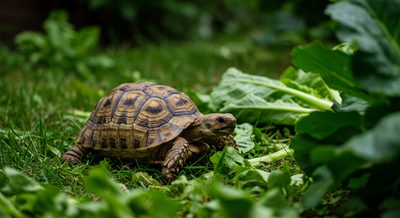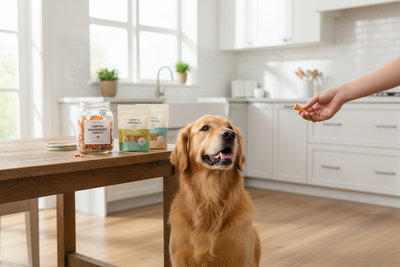
Welcome to the world of pet training! Plush dog toys are not only adorable, but they also play a crucial role in effectively training your furry friend. These soft, cuddly toys are more than just playthings; they are valuable tools that aid in behavioral development, mental stimulation, and positive reinforcement.
In this guide, we will delve into the significance of plush dog toys in shaping your pet's behavior and strengthening the bond between you and your beloved companion. Whether you're a seasoned pet owner or a novice in the realm of training, understanding the importance of plush dog toys is key to creating a happy and well-behaved pet. Join us as we explore how these toys can transform training sessions into enjoyable experiences for both you and your furry friend.
Section: Benefits of Plush Dog Toys in Pet Training
Plush dog toys are not only adorable, but they also serve a crucial role in pet training. Let's explore the various benefits they offer.
Physical and Mental Stimulation
- Plush dog toys provide physical exercise and mental stimulation for pets, helping to keep them active and engaged. The different textures and shapes of these toys can also offer tactile and visual stimulation, contributing to a well-rounded training experience. Additionally, interactive plush toys, such as those with hidden squeakers or treat compartments, can provide mental challenges, promoting problem-solving skills and preventing boredom.
Teaching Proper Chewing Behavior
- By introducing plush toys, pet owners can effectively teach their dogs proper chewing behavior. This helps in preventing destructive chewing of household items and promotes dental health. Furthermore, it encourages puppies to chew on appropriate items from an early age. It's essential to select toys of appropriate size and durability based on the dog's chewing habits and strength to ensure safe and beneficial chewing experiences.
Building Trust and Bonding
- Using plush dog toys in training can strengthen the bond between pets and their owners. These toys can be utilized in interactive play, training sessions, and as comfort objects, fostering trust and deepening the bond between the pet and the owner. Additionally, engaging in play with plush toys can help owners understand their pet's preferences, strengthening communication and empathy.
Encouraging Positive Behavior
- Plush dog toys can be used as positive reinforcement tools during training. By incorporating these toys into obedience or agility training, pets learn to associate desired behaviors with rewards, making the training process more enjoyable and effective. Moreover, using plush toys as rewards can help in shaping desirable behaviors and reducing anxiety or fear in pets.
Promoting Safety and Supervision
- It's crucial for pet owners to prioritize safety when selecting plush dog toys. Ensuring the toys are free from small parts and are sturdy enough to withstand chewing is essential to prevent choking hazards and ingestion of harmful materials. Additionally, supervision during playtime with plush toys is important to monitor the pet's interaction and prevent any potential risks.
Variety and Suitability
- When choosing plush dog toys, considering the pet's size, age, and chewing habits is vital. Opt for a variety of textures, sizes, and shapes to cater to different preferences and provide a diverse sensory experience. Moreover, regularly inspecting the toys for signs of wear and tear and replacing them when necessary contributes to maintaining a safe and enjoyable play environment for the pet.
Plush dog toys are invaluable tools in pet training, offering numerous benefits for both the pet and the owner. From physical and mental stimulation to fostering trust, encouraging positive behavior, and promoting safety and suitability, these toys play a vital role in enhancing the overall well-being and training experience of pets.
Choosing the Right Plush Dog Toy
Choosing the right plush dog toy is essential for providing your furry friend with a safe and enjoyable playtime experience. To make an informed decision, it's important to consider several factors, including size and durability, safety aspects, and the variety in textures and shapes.
Consideration of Size and Durability
When selecting a plush dog toy, it's crucial to consider the size and durability of the toy. Small toys can pose a choking hazard, especially for larger dogs, while oversized toys may be challenging for smaller dogs to handle. It's advisable to choose toys that are appropriately sized for your dog and are made from durable materials. Opt for toys with reinforced seams and strong construction to withstand the natural chewing and play behaviors of dogs, ensuring they last longer.
Safety Aspects
Prioritizing the safety of plush dog toys is paramount. Look for toys made from non-toxic materials and avoid those with small parts that could be chewed off and swallowed. Embellishments such as buttons and eyes should be avoided, as they can present hazards to your pet. Regularly inspect the toys for any signs of wear and tear, and replace them if they become damaged to prevent potential harm to your dog. Additionally, consider washable plush toys to maintain cleanliness and hygiene.
Variety in Textures and Shapes
To keep your dog engaged and entertained, offer a diverse selection of plush toys with various textures and shapes. Some dogs may enjoy toys with crinkly fabrics, squeakers, or different textures, while others may prefer toys in unique shapes that add an element of excitement to playtime. By providing a variety of options, you can cater to your dog's individual preferences and stimulate their mental and physical well-being.
Interactive Features
In addition to considering size, durability, safety, and variety, look for plush toys with interactive features such as hidden treats or puzzle elements. These features can provide mental stimulation and enrichment, promoting active play and preventing boredom in your furry companion.
Selecting the right plush dog toy involves careful consideration of size and durability, prioritizing safety aspects, offering a variety of textures and shapes, and incorporating interactive features. By keeping these factors in mind, you can choose toys that not only entertain your furry companion but also contribute to their overall well-being and happiness.
Incorporating Plush Dog Toys into Training Sessions
Introducing the Toy as a Positive Reinforcement Tool
Plush dog toys are not just for play; they can be powerful tools for training and behavior modification. When introducing plush dog toys into training sessions, it's crucial to establish them as positive reinforcement tools. This involves associating the toy with rewards, such as treats or praise, to encourage desired behavior. The toy should be seen as a special item that signifies a job well done, helping to reinforce positive behaviors in the dog. As a result, the dog will be motivated to engage in obedience training and other activities where the toy is involved.
Utilizing Plush Toys for Obedience Training
Utilizing plush toys for obedience training can yield impressive results. Incorporating them into activities like recall training and teaching commands can make the training process more engaging and enjoyable for dogs. For example, using a plush toy as a reward for successful command execution can create a positive association between following commands and receiving the toy. This positive reinforcement can lead to quicker and more enthusiastic learning in the obedience training process. Additionally, the tactile and interactive nature of plush toys can help in reinforcing desired behaviors, making the training experience more interactive and enjoyable for the dog.
Incorporating Playtime into the Training Routine
Furthermore, integrating playtime with plush toys into the training routine can enhance the bond between the dog and the trainer, making sessions more dynamic and enjoyable. Playtime with plush toys can serve as a break from rigorous training exercises, allowing the dog to relax and have fun. This can prevent burnout and maintain the dog's enthusiasm for the training sessions. Moreover, interactive play with plush toys can provide mental stimulation and physical activity, contributing to the overall well-being of the dog. By alternating focused training with playful interactions involving plush toys, the dog's responsiveness and engagement can be enhanced, resulting in a more well-rounded and enjoyable training experience.
Selecting Appropriate Plush Toys
It's important to select plush toys that are durable and safe for the dog. Always supervise playtime to prevent the dog from ingesting any parts of the plush toy. Look for toys designed for moderate to heavy chewers, with reinforced seams and non-toxic materials. Assess the size of the toy to ensure it's appropriate for the dog's breed and size. Additionally, inspect the toy regularly for any signs of damage and replace it when necessary to prevent potential hazards. By prioritizing the safety and durability of plush toys, trainers can ensure that these tools remain effective and enjoyable for training sessions.
By incorporating plush dog toys effectively, training sessions can become not only productive but also enjoyable experiences for dogs and trainers alike. The versatile nature of plush toys allows for their seamless integration into training routines, enhancing the learning process and strengthening the bond between dogs and their trainers.
Caring for Plush Dog Toys
Cleaning and Maintenance Tips
Plush dog toys are beloved companions for our furry friends, providing comfort and entertainment. To ensure the longevity and safety of these cherished toys, it's essential to follow proper cleaning and maintenance practices. Here are some comprehensive tips to keep plush dog toys clean and well-maintained:.
-
Regular Spot Cleaning: Use a damp cloth and a gentle, pet-safe detergent to spot clean any soiled areas on the toy. Avoid soaking the entire toy, as excessive moisture can lead to mold and mildew.
-
Machine Washing Guidelines: If the care label allows, consider machine washing the plush toy on a gentle cycle with a pet-safe detergent. For added protection, place the toy in a mesh laundry bag to prevent damage to delicate parts during the washing process.
-
Thorough Air Drying: After washing, ensure the toy is thoroughly air-dried to prevent the growth of bacteria and mold. It's important to avoid using a dryer, as the heat can potentially damage the fabric and any internal components.
-
Periodic Inspection: Regularly check the toy for loose parts, tears, or any signs of damage. Promptly remove any loose pieces that could pose a choking hazard to your pet.
-
Sanitizing Options: Consider using pet-safe disinfectant sprays or wipes designed for plush toys to further ensure cleanliness and hygiene.
Knowing When to Replace Worn-Out Toys
While plush toys can offer hours of enjoyment for your dog, it's crucial to recognize when a toy is no longer safe for continued use:.
-
Visible Wear and Tear: If the toy exhibits significant wear, such as loose seams, protruding stuffing, or missing parts, it's time to replace it to avoid potential hazards.
-
Damage to Internal Components: If your dog has managed to access the internal components, such as squeakers or plastic parts, discard the toy immediately to prevent ingestion or injury.
-
Behavioral Changes: Monitor your dog's interaction with the toy. Any alterations in their play behavior, such as increased aggression or disinterest, may indicate that the toy is no longer suitable or safe.
By diligently following these cleaning and maintenance tips and recognizing when to replace worn-out toys, you can prioritize your dog's safety and well-being while preserving the joy and entertainment provided by plush toys.
Plush dog toys play a vital role in training your pet. Not only do they provide entertainment and mental stimulation for your furry friend, but they also serve as valuable tools for positive reinforcement and behavior shaping. By incorporating plush dog toys into your training routine, you can create a fun and engaging environment that encourages learning and strengthens the bond between you and your pet. Remember to choose toys that are appropriate for your dog's size and play style, and always supervise playtime to ensure safety. With the right plush dog toys and a positive training approach, you can set your pet up for success and a lifetime of happy, healthy behavior.





